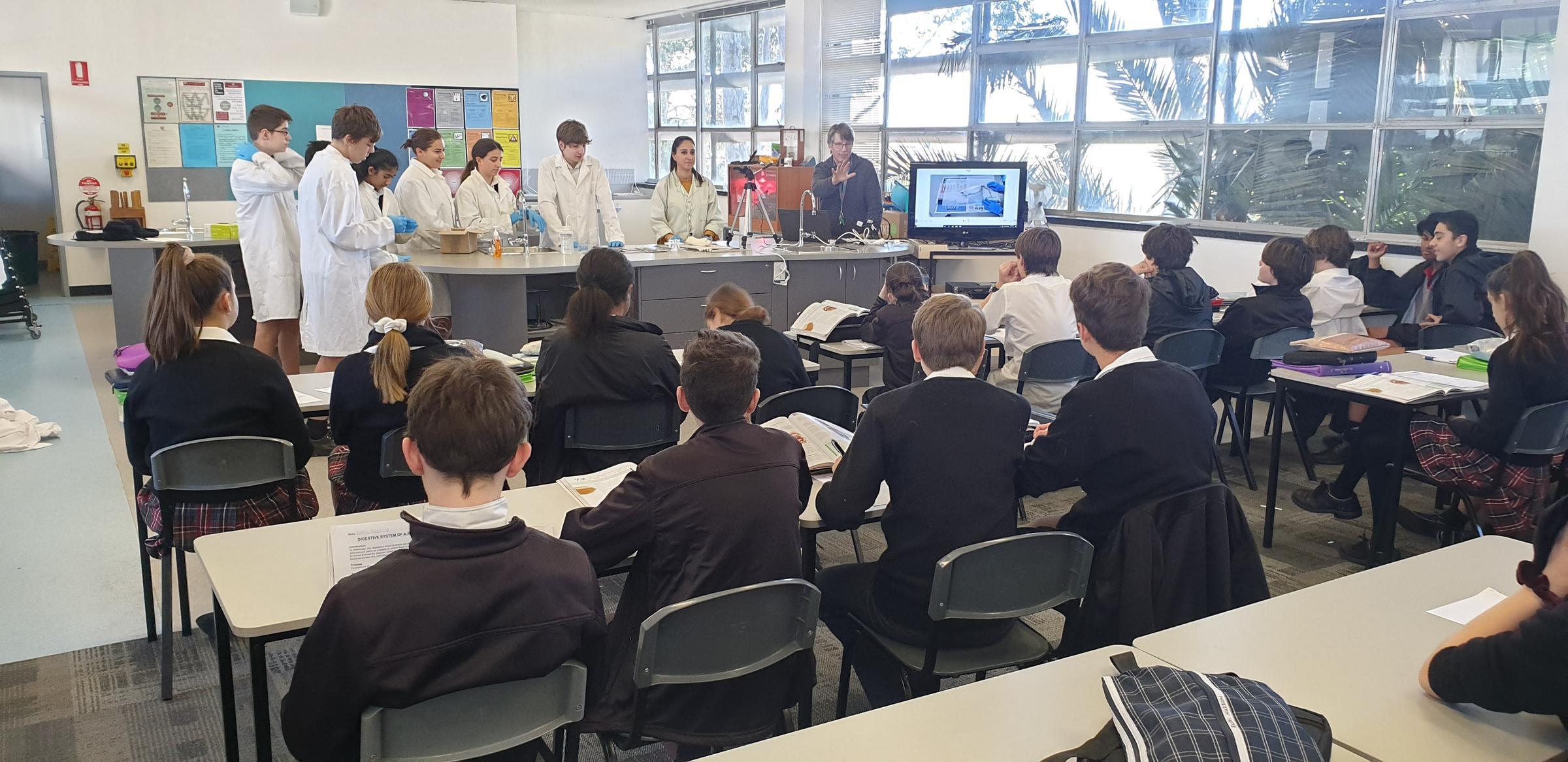Science News

Year 7
As an introduction to Forces, students designed paper “Whirlybirds” and had a competition to see whose whirlybird could stay in flight the longest. Students observed that the air is forced down and inward towards the centre base by the wings of the whirlybird, which pushes against the opposite edges of the base, causing it to spin. They also acknowledged that gravity is pulling the whirlybird to the ground. Using this knowledge, students were able to design models which stayed in flight for up to 4s. That’s a long time in whirlybird land!!
Following on from this, students explored pushing forces and used an “Aspro Rocket” to demonstrate this. Students placed half an Aspro clear tablet into a filmed canister filled with warm water. They quickly closed the lid of the canister and turn it upside down. As the aspro clear reacted with the water, gas was released inside the canister, creating a high pressure chamber. This pushing force of the gas particles inside, forces the canister to propel so high up, hitting the ceiling of the science room.
Year 8
As part of their studies of Body Systems, two Year 8 Science classes combined to observe Mrs Loucaides dissecting a rat. A camera was set up so that students could view the dissection through a TV screen. Students assisted in the dissection and were able to identify different organs including the heart, liver and intestines.
Concurrently, the Japanese Immersion class created posters of the human body, labelling the different organs and systems in Japanese.
Year 9
Miss Tingate’s 9E class dissected sheep’s brains as part of their studies and investigation into the structures of the Nervous System. Here students were required to label lobes of the brain they could identify on the outer surface. They previously learnt a song to assist them with this task. Following this, they then dissected the brain into the 2 hemispheres (left and right) and identified structures including the hypothalamus and medulla oblongata.
It is important to acknowledge that without access to materials like brains and hearts, students wouldn’t have the opportunity to observe and study things like body systems first hand. Thank you to “Your Local Butchers” in Malvern East for always providing our students with fresh and clean material that they can learn so much from.
Haroula Loucaides
Head of Science









